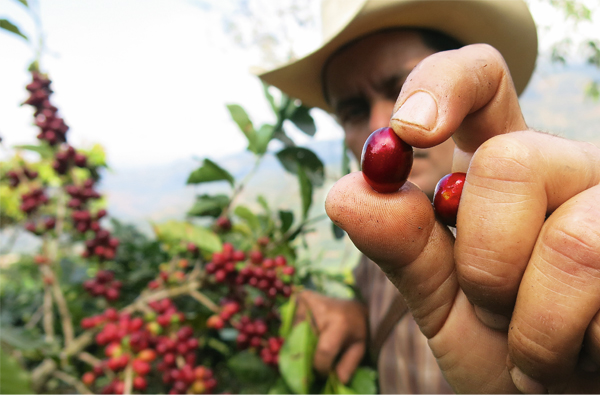ICO May: Despite upturn at the end, global coffee prices remain low

In May 2019, the monthly average of the ICO composite indicator fell to 93.33 US cents/lb, 1.2% lower than in April 2019. However, the last two weeks of the month saw a sharp rise in the daily composite indicator, at 101.17 US cents/lb and 103.25 US cents/lb, on 30 and 31 May respectively.
This reversal in the downward trend is the first time prices have risen above 100 US cents/lb since 18 February 2019. The daily composite indicator reached its lowest point on 7 May, when it fell to 89.31 US cents/lb.
Market fundamentals, including reports of adverse weather negatively affecting Brazil’s new crop, and a strengthening of the Brazilian real in the second half of May are the main drivers of the daily composite price in May.
Average prices for all group indicators fell in May 2019, except for Colombian Milds, which remained stable at 124.40 US cents/lb. Robusta prices experienced the largest decline, averaging 71.12 US cents/lb, 2.9% lower than in April 2019. Brazilian Naturals fell by 0.6% to 91.95 US cents/lb, while Other Milds fell by 0.5% to 120.55 US cents/lb. The decrease in Other Milds widened the differential between Colombian Milds and Other Milds in May 2019 to 3.85 US cents/lb, 17% higher than in April 2019.
In April 2019, world coffee exports rose by 4.6% to 10.73 million bags compared to April 2018. Shipments of Brazilian Naturals grew by 17.7% to 3.14 million bags, due to a 24.6% increase to 2.98 million bags of Brazil’s exports in April 2019. Colombian Milds amounted to 1.11 million bags while Robustas reached 3.91 million bags, a growth of 2.1% and 0.5%, respectively. However, Other Milds declined by 1.6% to 2.57 million bags.
Global exports in the first seven months of coffee year 2018/19 reached 74.01 million bags compared to 70.89 million bags in 2017/18. For October 2018 to April 2019, shipments of Brazilian Naturals increased by 18.5% by 24.86 million bags, and exports of Colombian Milds grew by 8% to 9.07million bags. However, Robusta shipments fell by 0.3% to 26.09 million bags while exports of Other Milds decreased by 8.9% to 13.97 million bags.
In April 2019, Brazil increased its exports from 2.98 million bags to 2.39 million bags in April 2018, while Vietnam exported 2.4 million bags, a decline of 5.9% in the same period. Colombia shipped 967,000 bags in April 2019, 4% higher than one year ago. India’s coffee shipments fell by 10.7% to 598,240 bags in April 2019, and after five months of decline compared to the previous year, exports from Honduras rose by 16% to 933,537 bags in April 2019.
Crop year 2019/20 is anticipated to be a large off-year crop, though recent reports of adverse weather have tempered these expectations.
Vietnam’s output is estimated 3.4% lower at 29.5 million bags in coffee year 2018/19. Productivity has been affected by low water levels for irrigation and low prices that have discouraged farmers from investing in their coffee trees. The reduced volume in its harvest, as well as competition from other significant Robusta exporters, has led to lower exports from Viet Nam in coffee year 2018/19.
India’s production for crop year 2018/19 is estimated at 5.2 million bags, which is 10.5% lower than in 2017/18, the lowest volume harvested in the last five years. Heavy rains and flooding at the end of last summer negatively affected the development of the 2018/19 crop. Lower production coupled with rising domestic consumption has led to a decrease in coffee available for export.
World coffee production is estimated at 168.05 million bags in coffee year 2018/19, 1.5% higher than in 2017/18. Consumption is estimated to rise by 2% to 164.64 million bags, with consumption in exporting countries growing by 1.3% to 50.26 million bags. While demand has grown at an average annual rate of 2.2% in the last five years, global output is expected to exceed it by 3.41 million bags in coffee year 2018/19, making this the second consecutive year of surplus.



